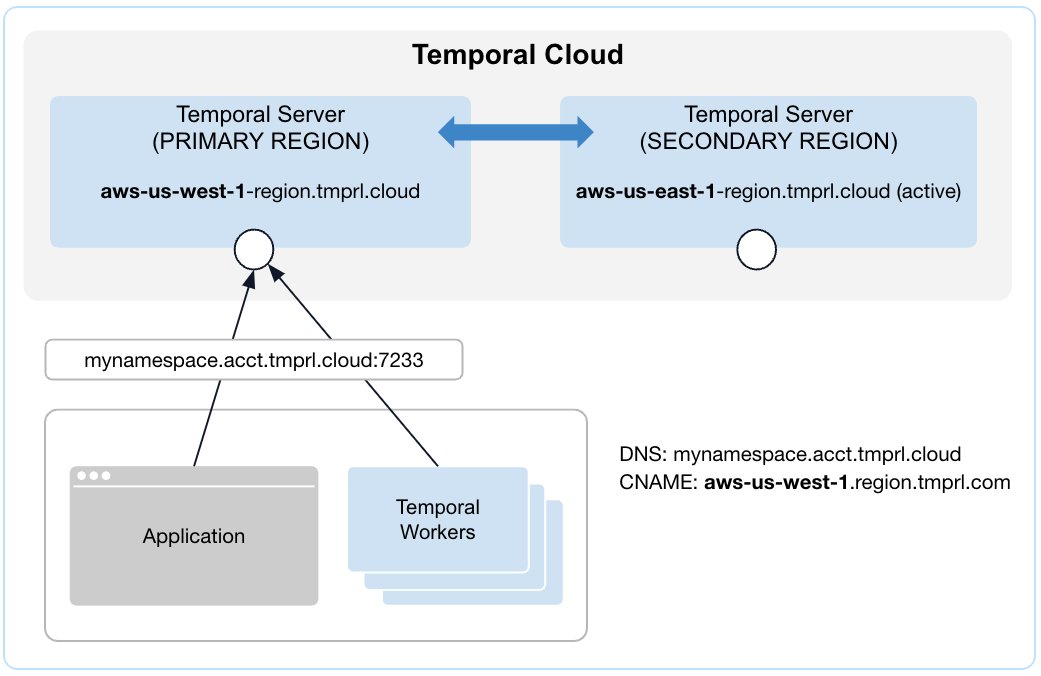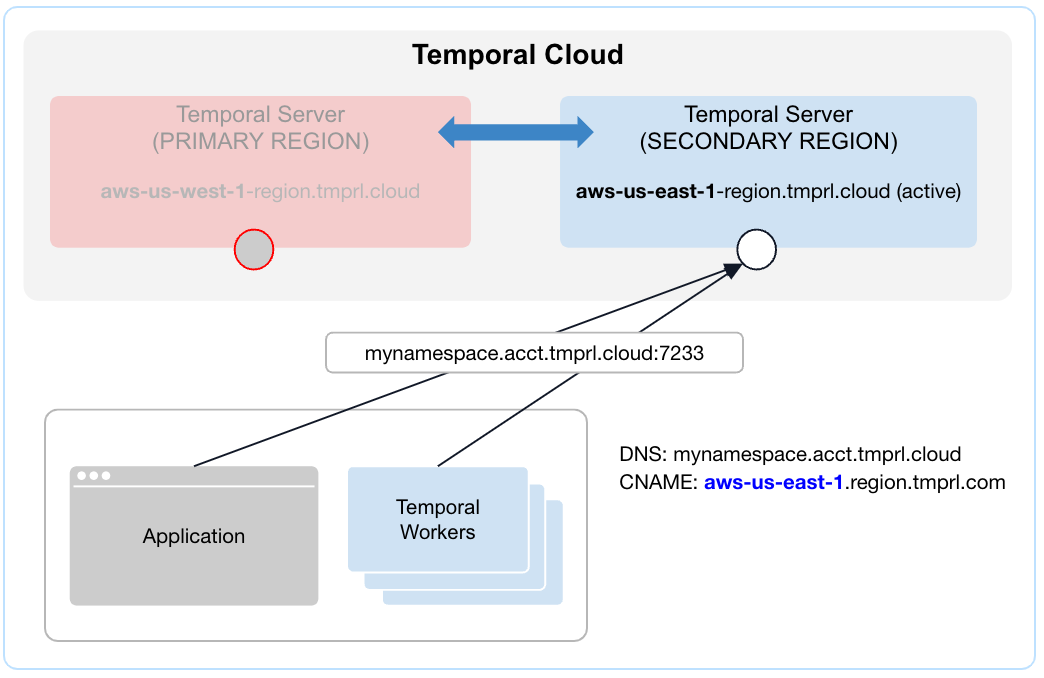High-availability Namespaces
High-availability Namespaces are in Public Preview for Temporal Cloud.
Temporal Cloud's high-availability Namespaces provide disaster-tolerant deployment for workloads where availability is critical. When you enable high availability, Temporal Cloud automatically synchronizes data between a primary and a fallback Namespace to keep them in sync. It also enables failovers, allowing functionality to shift from an active availability zone to a fallback availability zone.
An availability zone is a physically isolated data center within a deployment region for a given cloud provider. Regions consist of multiple availability zones, providing redundancy and fault tolerance. In some cases, the fallback zone may be in the same region as the primary zone, or it may be in a different region altogether, depending on your deployment configuration.
High availability simplifies deployment, ensuring operational continuity and data integrity even during unexpected events. Regional disruptions or other issues that affect the data centers within a specific availability zone may occur. High availability allows processing to shift from the affected zone to an already-synchronized fallback zone.
This synchronized zone is called a "replica." The process of duplicating all Workflow data ensures that your replica, which serves as the standby region, is always available and ready to take on the active role.
In the event of network service or performance issues in the active zone, your replica is ready to take over. When necessary, Temporal Cloud smoothly transitions control from the active to the standby zone using a process called "failover".
Temporal Cloud's multi-region Namespace feature includes a 99.99% contractual Service Level Agreement (SLA). It provides 99.99% availability and 99.99% guarantee against service errors.
For many customers, reliability is critical to maintaining business continuity and minimizing disruptions. Temporal Cloud's multi-region Namespace feature includes a 99.99% contractual Service Level Agreement (SLA). It provides 99.99% availability and a 99.99% guarantee against service errors.
Temporal high-availability
For many organizations, ensuring high availability is critical to maintaining business continuity. A high-availability Namespace (HAN) creates a single logical Namespace that operates across two physical zones: one active and one standby. HANs streamline access for both zones to a unified Namespace endpoint. As Workflows progress in the active zone, history events are asynchronously replicated to the standby zone, ensuring continuity and data integrity.
In the event of an incident or outage in the active zone, Temporal Cloud will seamlessly failover to your standby zone. Failovers allow existing Workflow Executions to continue running and new Workflow Executions to be started. Once failover occurs, the roles of the active and standby zones switch. The standby zone becomes active, and the previous active zone becomes the standby. After the issue is resolved, the zone "fails back" from the replica to the original.
In traditional active/active replication, multiple nodes serve requests and accept writes simultaneously, ensuring strong synchronous data consistency. In contrast, with a Temporal Cloud high-availability Namespace, only the active zone accepts requests and writes at any given time. Workflow history events are written to the active zone first and then asynchronously replicated to the standby zone replica, ensuring that the replica remains in sync.
| Before failover | After failover |
|---|---|
 |  |
Choosing high availability
Should you be using high-availability Namespaces? It depends on your availability requirements:
- High-availability Namespaces offer a 99.99% contractual SLA for workloads with strict high-availability needs. HANs use two Namespaces in two deployment zones to support standby recovery. In the event of a zone failure, Temporal Cloud automatically fails over the HAN Namespace to the standby replica.
- Single-zone Namespaces include a 99.9% contractual Service Level Agreement (SLA). In single-zone use, Temporal clients connect to a single Namespace in one deployment zone. For many applications, this offers sufficient availability.
Temporal Cloud provides 99.99% service availability for all Namespaces, both single-region and high-availability.
Advantages of using a multi-region Namespace:
- No manual deployment or configuration required—just simple push-button operation.
- Open Workflows continue in the standby zone with minimal interruption and data loss.
- No changes needed for Worker or Workflow code during setup or failover.
- 99.99% contractual SLA.
How to Upgrade
Upgrading to high-availability:
Enable the multi-region Namespace feature for your existing single-region Namespace by adding a second region to your Namespace. After adding the second region, Temporal Cloud begins data replication for your new standby region. Temporal Cloud notifies you by email once the replication has caught up and both regions are in sync.